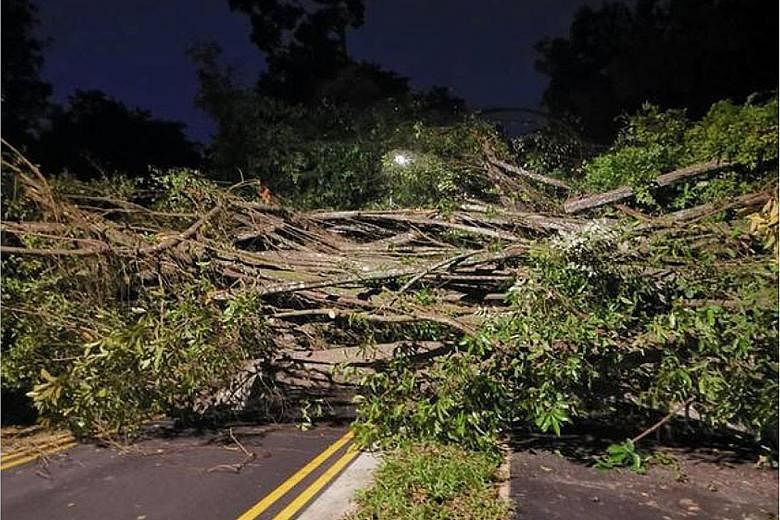Fewer than 400 "tree incidents" were recorded this year, a sharp decline from the 3,000 cases in 2001, the National Parks Board (NParks) said yesterday.
Most of the incidents were related to snapped branches and NParks noted that the drop comes despite the fact that Singapore is encountering more severe weather.
It was responding to queries from The Straits Times on its tree management programme after at least three recent cases of falling trees.
On Nov 20, a tree shattered the rear windscreen of a white Subaru car in Scotts Road, causing a jam in town and, on Monday, another tree toppled after heavy rain in Bedok North, landing on a black Mercedes-Benz.
In Old Upper Thomson Road on Wednesday, a jogger had a narrow escape when a tree fell.
NParks said yesterday that it has a "rigorous regime" of inspections and pruning as well as post-storm checks, and the system has been continuously refined since the early 2000s. Checks are intensified during periods of adverse weather conditions, such as in December.
"We pick out trees for targeted tree pruning and crown reduction or more detailed inspection. Following any storm event, officers also check the affected sites to identify storm-damaged trees and take the necessary mitigation measures," NParks said.
It said that since November 2016, it has also carried out pre-emptive inspections on trees that are more than 4m in girth. Each tree is usually inspected at least once every one or two years, with certain trees and localities subjected to more checks.
The frequency of checks depends on a variety of factors, such as the age and condition of trees and their proximity to human traffic or valuable property.
Dr Teo Ho Pin, coordinating chairman of the 15 People's Action Party town councils, has said they are working closely with NParks to minimise damage from such tree incidents amid the year-end monsoon.
"Corrective measures where necessary are carried out immediately. We are adopting additional measures, such as increased frequency of site inspections to spot and remove dead, dying or weakened branches in the tree crown," said Dr Teo, who is MP for Bukit Panjang.
Aljunied-Hougang Town Council, managed by the opposition Workers' Party, did not respond to questions from The Straits Times on its tree management plan.
ArborCulture principal arborist Rick Thomas told The Straits Times that strong winds and soft soil were potentially a double whammy for tree stability.
But he added that Singaporeans should take a broader view of the recent incidents. "The aesthetic, social, environmental and economic benefits of our urban trees far outweigh the risks that are associated with their planting."

